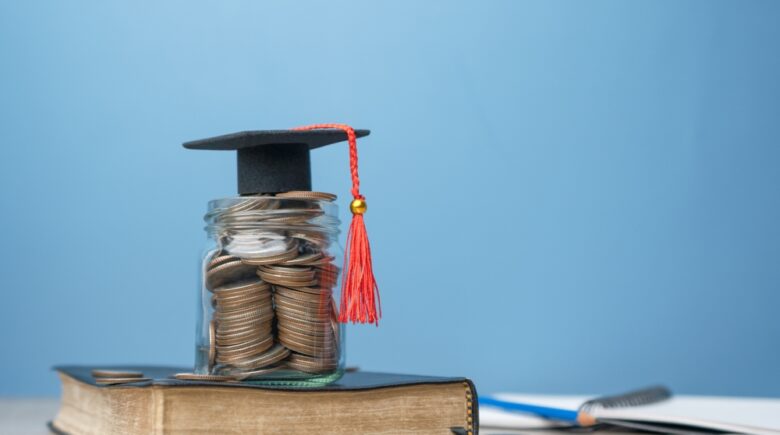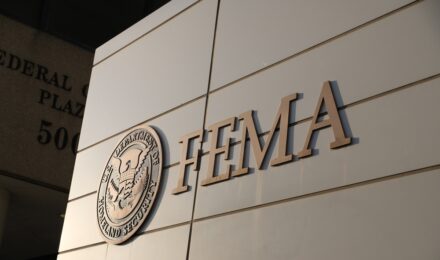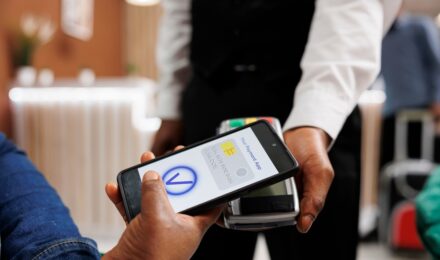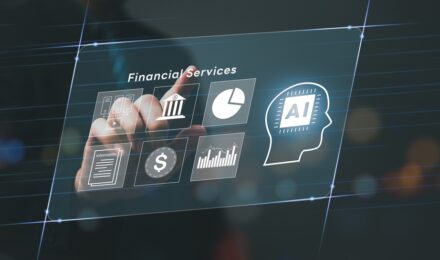Federal student loan policy in the United States has undergone constant revision over the past decade, with shifting political priorities and economic conditions shaping how repayment and forgiveness programs are administered. In 2025, several new updates have taken effect that directly impact millions of borrowers. Understanding these changes is critical for those seeking relief or planning their repayment strategies.
This article reviews the latest updates to federal student loan forgiveness, analyzes repayment plan adjustments, and explores what borrowers should anticipate in the coming years.
The State of Student Debt in 2025
Outstanding student loan balances remain above $1.7 trillion, with repayment pressures rising after the end of pandemic-era payment pauses. Inflation and higher living costs have compounded the difficulty many borrowers face in resuming payments. Federal programs aim to provide some relief, but navigating the options can be complex, especially as repayment structures continue to evolve.
Key Forgiveness Updates in 2025
Several forgiveness initiatives have been updated or expanded this year. Public Service Loan Forgiveness (PSLF) has undergone administrative improvements designed to reduce paperwork and errors, making it easier for qualifying borrowers in government or nonprofit work to receive credit toward forgiveness. Additional targeted discharges have also been issued for borrowers defrauded by certain for-profit institutions, with the Department of Education committing to quicker processing times.
Income-driven repayment (IDR) plans now integrate more closely with forgiveness pathways. For borrowers enrolled in new IDR options, payments are capped at a lower percentage of discretionary income than in previous years, accelerating progress toward eventual loan cancellation.
Adjustments to Repayment Plans
The structure of repayment plans in 2025 reflects a greater emphasis on affordability. Monthly payment calculations now consider updated poverty guidelines, ensuring that low-income borrowers have lower required contributions. For those on standard repayment schedules, interest accrual policies have also been modified. Some borrowers with modest balances are now protected from ballooning interest, reducing the risk of balances growing despite years of payments.
Two major adjustments stand out for borrowers in 2025:
- The SAVE Plan Expansion: The Saving on a Valuable Education (SAVE) plan, first introduced in 2023, has been expanded. Borrowers pay no more than 5% of discretionary income for undergraduate loans, and any unpaid interest is no longer capitalized if payments are made on time.
- Automatic Enrollment for At-Risk Borrowers: Borrowers who fall into delinquency may now be automatically shifted into IDR plans by their servicers, preventing default and helping them maintain eligibility for forgiveness programs.
Impact on Public Service Workers
Public Service Loan Forgiveness remains a cornerstone of student debt relief policy. In 2025, eligibility checks have been streamlined with data-sharing agreements between federal agencies and loan servicers. Teachers, healthcare professionals, and government employees should find it easier to confirm qualifying employment and track their progress toward the 120-payment requirement. Expanded outreach efforts are also targeting rural and underserved areas to ensure eligible workers do not miss opportunities for relief.
Challenges and Criticisms
Despite improvements, challenges persist. Some borrowers report confusion over overlapping repayment and forgiveness programs, particularly when switching servicers. Critics argue that piecemeal adjustments have created a fragmented system that is difficult for average borrowers to navigate. Others note that forgiveness efforts remain vulnerable to political shifts, meaning relief offered today could be scaled back under future administrations.
There are also concerns about fairness. Borrowers who already repaid their loans or who chose less expensive education options may view expanded forgiveness as inequitable. Policymakers continue to debate broader solutions that balance fairness with economic necessity.
Future Outlook: What to Expect Next
The outlook for student loan forgiveness remains uncertain. Lawmakers are considering proposals to simplify repayment further by merging multiple IDR plans into one unified program. Broader cancellation initiatives, though politically contentious, continue to surface in congressional debates. Additionally, the Department of Education has indicated it may enhance income verification processes through tax data integration, reducing paperwork for borrowers while tightening oversight.
The long-term future may also include stronger partnerships between federal programs and state-level initiatives, particularly for professions facing shortages such as teaching, nursing, and public health. These targeted relief efforts are likely to grow in importance as workforce needs evolve.
Conclusion
Student loan forgiveness and repayment programs in 2025 reflect a continued effort to balance borrower relief with administrative efficiency. The expansion of income-driven repayment options, improvements to Public Service Loan Forgiveness, and protections against runaway interest provide meaningful support for millions of Americans. However, challenges remain in simplifying the system and ensuring stability across political transitions. Borrowers should stay informed, review their eligibility regularly, and remain proactive in adjusting their repayment strategies to make the most of available relief.
References
- U.S. Department of Education – Student Aid Updates
- Federal Student Loan Forgiveness Guidance – CFPB
- National Consumer Law Center – Student Loan Borrower Assistance
- The Brookings Institution – Analysis of Student Loan Policy
Federal student loan policy in the United States has undergone constant revision over the past decade, with shifting political priorities and economic conditions shaping how repayment and forgiveness programs are administered. In 2025, several new updates have taken effect that directly impact millions of borrowers. Understanding these changes is critical for those seeking relief or planning their repayment strategies.
This article reviews the latest updates to federal student loan forgiveness, analyzes repayment plan adjustments, and explores what borrowers should anticipate in the coming years.
The State of Student Debt in 2025
Outstanding student loan balances remain above $1.7 trillion, with repayment pressures rising after the end of pandemic-era payment pauses. Inflation and higher living costs have compounded the difficulty many borrowers face in resuming payments. Federal programs aim to provide some relief, but navigating the options can be complex, especially as repayment structures continue to evolve.
Key Forgiveness Updates in 2025
Several forgiveness initiatives have been updated or expanded this year. Public Service Loan Forgiveness (PSLF) has undergone administrative improvements designed to reduce paperwork and errors, making it easier for qualifying borrowers in government or nonprofit work to receive credit toward forgiveness. Additional targeted discharges have also been issued for borrowers defrauded by certain for-profit institutions, with the Department of Education committing to quicker processing times.
Income-driven repayment (IDR) plans now integrate more closely with forgiveness pathways. For borrowers enrolled in new IDR options, payments are capped at a lower percentage of discretionary income than in previous years, accelerating progress toward eventual loan cancellation.
Adjustments to Repayment Plans
The structure of repayment plans in 2025 reflects a greater emphasis on affordability. Monthly payment calculations now consider updated poverty guidelines, ensuring that low-income borrowers have lower required contributions. For those on standard repayment schedules, interest accrual policies have also been modified. Some borrowers with modest balances are now protected from ballooning interest, reducing the risk of balances growing despite years of payments.
Two major adjustments stand out for borrowers in 2025:
- The SAVE Plan Expansion: The Saving on a Valuable Education (SAVE) plan, first introduced in 2023, has been expanded. Borrowers pay no more than 5% of discretionary income for undergraduate loans, and any unpaid interest is no longer capitalized if payments are made on time.
- Automatic Enrollment for At-Risk Borrowers: Borrowers who fall into delinquency may now be automatically shifted into IDR plans by their servicers, preventing default and helping them maintain eligibility for forgiveness programs.
Impact on Public Service Workers
Public Service Loan Forgiveness remains a cornerstone of student debt relief policy. In 2025, eligibility checks have been streamlined with data-sharing agreements between federal agencies and loan servicers. Teachers, healthcare professionals, and government employees should find it easier to confirm qualifying employment and track their progress toward the 120-payment requirement. Expanded outreach efforts are also targeting rural and underserved areas to ensure eligible workers do not miss opportunities for relief.
Challenges and Criticisms
Despite improvements, challenges persist. Some borrowers report confusion over overlapping repayment and forgiveness programs, particularly when switching servicers. Critics argue that piecemeal adjustments have created a fragmented system that is difficult for average borrowers to navigate. Others note that forgiveness efforts remain vulnerable to political shifts, meaning relief offered today could be scaled back under future administrations.
There are also concerns about fairness. Borrowers who already repaid their loans or who chose less expensive education options may view expanded forgiveness as inequitable. Policymakers continue to debate broader solutions that balance fairness with economic necessity.
Future Outlook: What to Expect Next
The outlook for student loan forgiveness remains uncertain. Lawmakers are considering proposals to simplify repayment further by merging multiple IDR plans into one unified program. Broader cancellation initiatives, though politically contentious, continue to surface in congressional debates. Additionally, the Department of Education has indicated it may enhance income verification processes through tax data integration, reducing paperwork for borrowers while tightening oversight.
The long-term future may also include stronger partnerships between federal programs and state-level initiatives, particularly for professions facing shortages such as teaching, nursing, and public health. These targeted relief efforts are likely to grow in importance as workforce needs evolve.
Conclusion
Student loan forgiveness and repayment programs in 2025 reflect a continued effort to balance borrower relief with administrative efficiency. The expansion of income-driven repayment options, improvements to Public Service Loan Forgiveness, and protections against runaway interest provide meaningful support for millions of Americans. However, challenges remain in simplifying the system and ensuring stability across political transitions. Borrowers should stay informed, review their eligibility regularly, and remain proactive in adjusting their repayment strategies to make the most of available relief.







